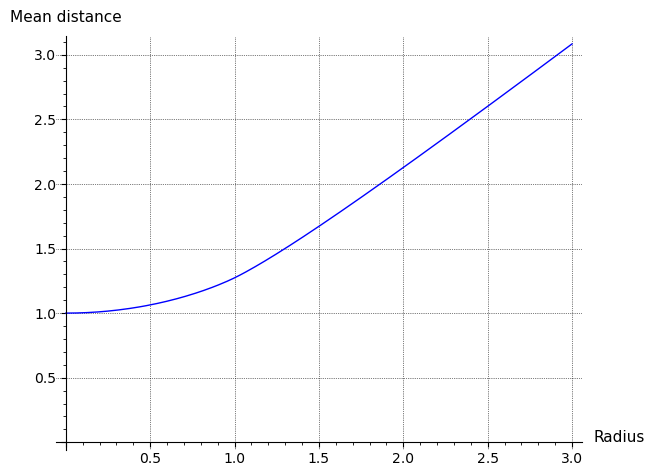In a binary star system, there are two types of orbits which planets can have.
A planet in an S-type or non circumbinary orbit will orbit one of the two stars. Thus the distance between the two stars must be at least several times as great as the semi-major axis of the planet's orbit, if the planet is to have a stable orbit.
A planet in an p-type or circumbinary orbit will orbit both of the two stars. Thus the semi-major axis of the planet's orbit must be at least a few times as great as the distance between the two stars for the planet to have a stable orbit.
It is possible for a binary star system to have planets in S-type orbits around one of the stars, or both of the stars, and to have planets in P-type orbits around both of the stars.
Each planet around a star will have a forbidden zone around its orbit where no other planet can orbit because of gravitational interactions. The closer two planets are to their star, the smaller their forbidden zones will be, and the closer the two orbits can be.
If a binary system has two stars, A and B, and planets in S-type orbits around each of them, it seems obvious to me that the innermost planet around A will be - on average, as the question asks,-closest to each of the other planets orbiting around A. And similarly the innermost planet orbiting around B will be, on average, as the question asks, closest to each of the other planets orbiting around B.
If the separation between A and B must be at least, for example, at 5 times the distance of the orbit of the outermost planet around either star, we can make a picture of the system.
Assume that the outermost planet around each of the stars orbits at 10 units, and the separation of the two stars in their orbits is 50 units. Obviously the separation between the outermost planets of each star will vary between 40 to 60 units, with an average separation of about 50.99 units.
But an inner planet orbiting star A at 5 units, for example, planet A I, will always be between 5 and 15 units from the outermost planet orbiting Star A at 10 units, planet A II, and the average Separation between the two planets will be about 11.180 units according to the Pythagorean theorm.
So any planet orbiting star A will always be closer to any planet orbiting star A than any planet orbiting star B can ever get, even at its closest.
Assume that there are also planets in P-type or circumbinary orbits around the center of mass of the two stars A & B. Imagine that planet AB I orbits at 250 units and planet AB II orbits at 500 Units and planet AB III orbits at 1,000 units.
The distance bween AB I and AB II will always be between 250 and 750 units with an average of 559.01 units.
The distance between AB II and AB III will always be between 500 and 1,500 units with an average of 1118.03 units.
The distance between AB I and AB III Will always be between 750 and 1,250 units, with an average of 1,030.77 units.
So that indicates that the innermost planet orbiting in a P-type orbit around the center of gravity of the two stars A and B, namely planet AB I, will be the closest - on the average, as the question asks - to the other planets orbiting. in P-type orbits around both of the stars.
So that leaves the question of whether any of the planets in S-type orbits around only one of the stars, A or B, will be closer - on the average, as the question asks - to the planets in P-type orbits around the center of mass of the stars A & B.
Assuming that stars A & B have equal mass, they will orbit the center or mass or barycenter, at equal distances. Assuming almost perfectly circular orbits, each star will always be almost exactly 25 units from the barycenter.
I stated that no planet of A or B could have a stable orbit more than 10 units from its star. So no planet of A or B could ever get more 35 units from the barycenter of the two stars.
So a planet orbiting A or B could get between 215 and 285 units from planet AB I, with an average distance of about 251 units.
That means that a planet orbiting A or B could sometimes be closer to planet AB I than planet AB II is.
A planet orbiting A or B could get between 465 and 535 units from the planet AB II, with an average distance of about 500.646 units. Which is shorter than the average distance between AB I and AB II.
A planet orbiting A or B could get between 965 and 1,035 units from the planet AB III, with an average distance of about 1,000.3124 units. Which is shorter than the average distance between AB II and AB III and shorter than the averaage distance between AB I and AB III.
So apparently in a binary star system with planets in S-type orbits around one or each of the stars, as well as planets in P-type orbits around the center of mass of both the stars, the planets in S-type orbits will be closer - on the average, as defined in the question - to the planets in P-type orbits than any of the planets in P-type orbits will be - on the average, as defined in the question - to each other.
Of course I have only demonstrated that for the specific orbits I have chosen for the system in my example.







